Pediatricians share 11 things they wouldn't keep in their kids' playrooms
Monica Humphries

- Insider spoke to five pediatricians about things they would avoid having in their kids' playrooms.
- Toys with small pieces topped their list of the most dangerous items.
- Others said they would never have a toy chest or baby walker.
A playroom should be filled with toys, but there are a handful of items - including some that are designed for children - that parents may want to avoid make the room safer, according to pediatricians.
Insider spoke to five pediatricians who shared what they would avoid having in their kids' playroom. (They also suggest saving poison control's phone number, taking a CPR class, and reading up on first aid tips.)
From toy chests to exposed outlets, here are 11 items to think twice about when designing your home playroom.
One pediatrician says to steer clear of super loud toys, as these can cause hearing damage.
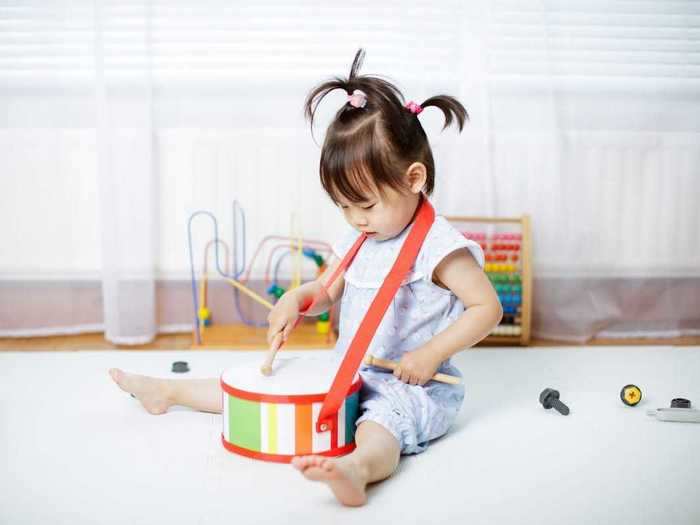
"Growing up, we always wanted our toys to be the loudest," Dr. Nkeiruka Orajiaka, an ER pediatrician and a mother of three, told Insider.
But Orajiaka says parents may want to steer clear of toys that could be loud enough to cause hearing damage.
Orajiaka doesn't allow any toys in her home that are on the noisy list, a list of loud toys created by the Sight and Hearing Association. The association found that some popular toys can cause damage within 15 minutes of using them.
If one of these toys happens to be your child's favorite, try covering the speaker with some plastic packaging tape, which will dampen the sound. Or you can always remove the battery and use the toy without its sound function.
All five pediatricians say unbracketed or unstable furniture doesn't belong in a playroom.
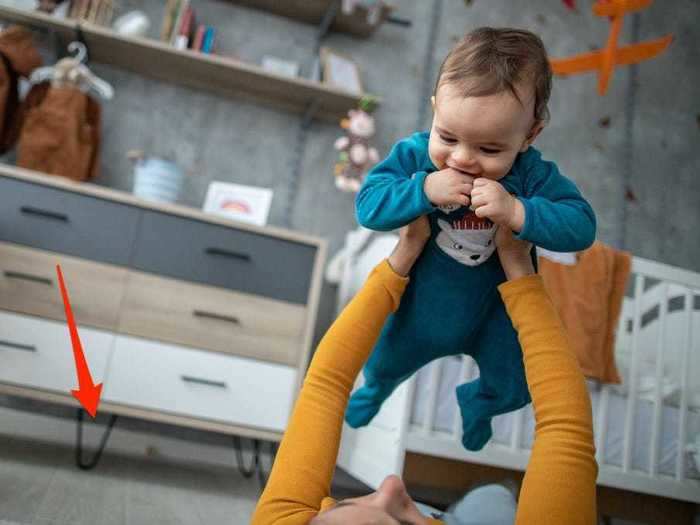
Every pediatrician Insider spoke to said they'd make sure heavy furniture was secured to the wall.
"In any room, we have to be concerned about the furniture," Dr. Meghan Martin, a pediatric emergency medicine physician at Johns Hopkins All Children's Hospital and a mom of four, told Insider. "Furniture really should be secured to the wall using a bracket, wall strap, anchor — something that's pretty strong. So if the kid does try and climb on it, it's not going to tip over on them."
As part of its Anchor It campaign, the US Consumer Product Safety Commission reported that nearly 475 children died of tip-over incidents between 2000 and 2019, with a majority of fatalities involving children under 6.
Simple, affordable brackets or furniture straps can make a huge difference.
One pediatrician urged families to ditch the baby walker.
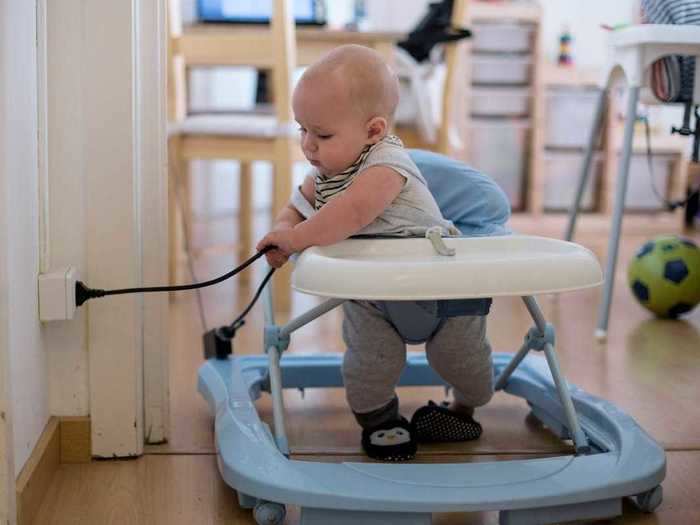
Dr. Syeda Amna Husain, a pediatrician, lactation consultant, and mother, said her children never used a baby walker, and that's because research shows they may not be safe.
"Even though we've been saying this for years and years, parents are still wanting to bring it into their homes," Husain told Insider.
In a walker, an unsupervised baby can easily walk into dangerous areas of a home, like a staircase, pool, or hot stove. They could also bump into a wall, which could dismount art or furniture.
The American Academy of Pediatrics called for a ban on the sale and manufacturing of mobile infant walkers, and urges parents to ditch baby walkers and opt for stationary activity centers or playpens instead.
Pediatricians say parents should sort through their kids' toys to remove any with tiny pieces that could present a choking hazard.
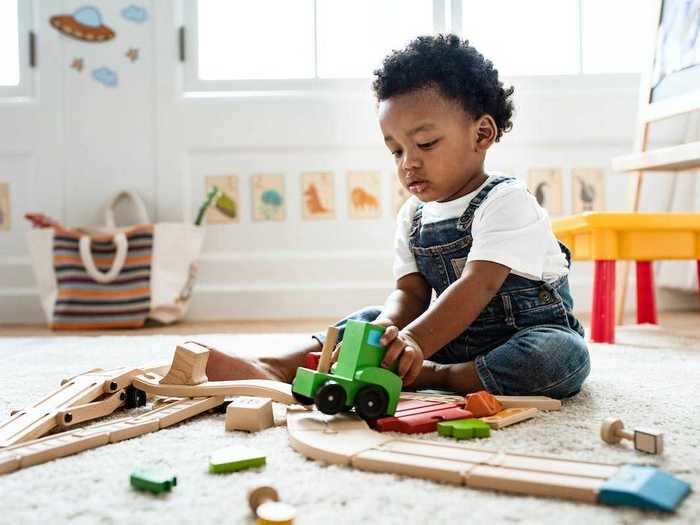
According to the American Academy of Pediatrics' Healthy Children website, children between the ages of 6 months and 3 years are at the highest risk for choking on food and non-food items.
Every pediatrician said that toys with small pieces are a potential choking risk.
"We did try to always sure that the toys we brought into our home are not a choking hazard," Husain said.
To decide if a toy is a choking hazard, Husain and Orajiaka suggested using the toilet tube test. If a toy can fit through the toilet paper tube, which is about 1.25 inches, it's a choking hazard.
From there, you can separate toys into which ones you don't want in your home, which ones a child can play with supervised, and which ones are allowed for unsupervised playtime.
Pediatricians recommend avoiding heavy artwork and mirrors in the playroom and throughout the entire home.
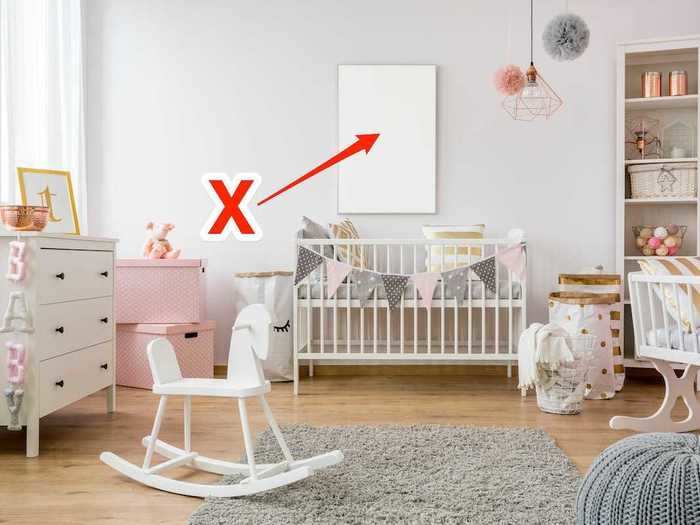
Heavy wall art, mirrors, paintings, or other decor pose a risk of falling off the wall and toppling onto your child. If the decor is encased in glass or has sharp corners, this could cause serious injuries.
Husain and Orajiaka suggest avoiding heavy artwork in the playroom as well as elsewhere in the home.
If you do decide to have some artwork, opt for light items and make sure to hang the artwork securely in a place far from where your child plays.
A toy chest is a no-go since it can crush tiny fingers, and if a child climbs inside they might struggle to get out.
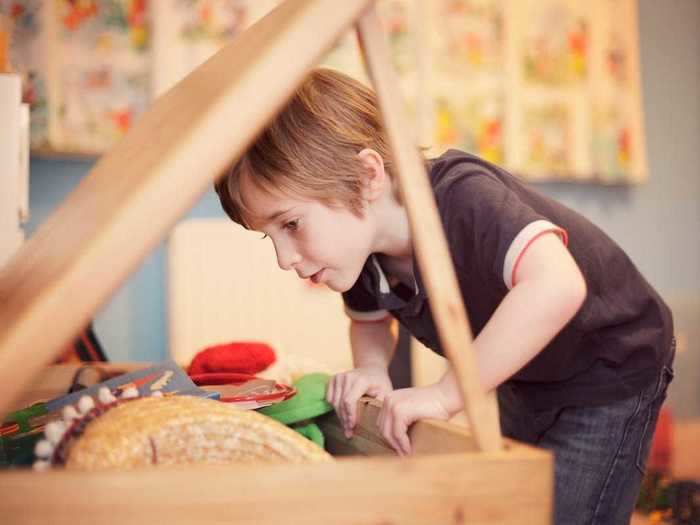
You won't find a toy chest in the homes of Orajiaka or Dr. Krupa Playforth, a pediatrician based in Virginia and mother of two, for a handful of reasons.
A toy chest, or a bin with a lid, could potentially close on the child, crushing their fingers or other body parts. Even worse, a child could climb into the chest and accidentally get trapped and suffocate.
The US Consumer Product Safety Commission also stressed the potential dangers of toy chests citing 34 deaths between 1996 and 2014 directly due to toy chests.
Instead, opt for a toy bin that doesn't have a lid.
Pediatricians say it's important to check that window blinds don't have long cords as these can be dangerous for children.
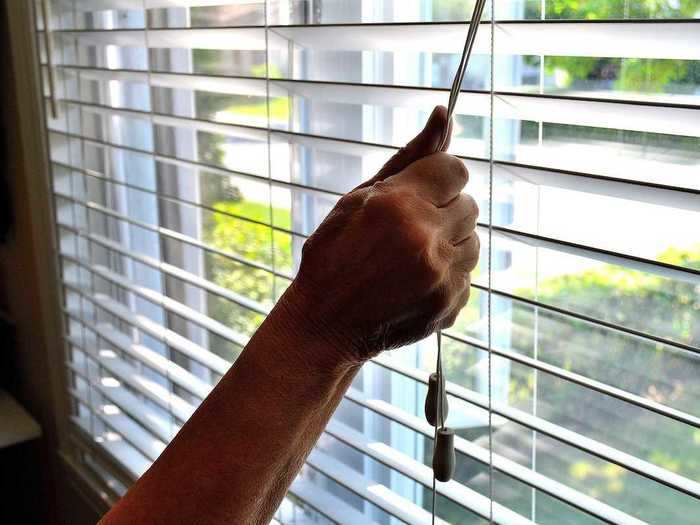
You should be on the lookout for blinds with long, looped strings as these can pose a strangulation risk, according to the pediatricians Insider spoke with.
Between 1990 and 2015, an estimated 16,827 children went to the emergency room for injuries related to corded blinds, according to a study published in the journal Pediatrics.
Fortunately, in 2018, a new safety standard was set and blind manufacturers were required to produce window coverings that are either cordless or have inaccessible cords, according to USA Today.
If your home has the old cords, however, you can cut the loop and purchase a cord winder or wrapper to eliminate any risk.
Pediatricians also warn not to keep any outlets uncovered as these can lead to injuries.
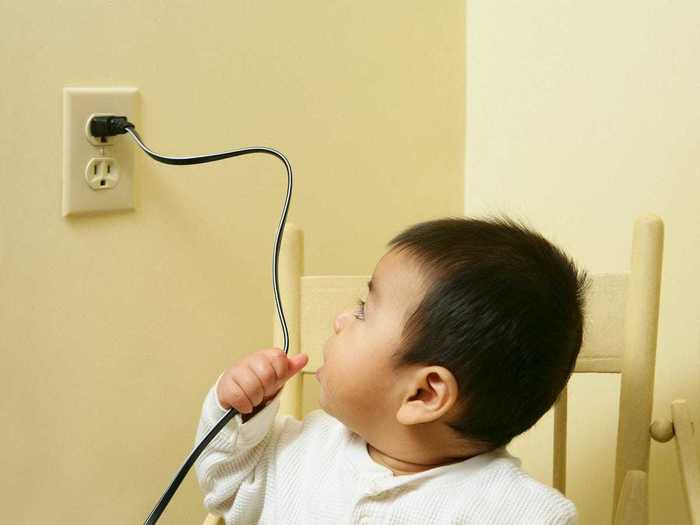
Every pediatrician Insider spoke with mentioned using outlet covers to keep their children safe.
According to 2016 data from the Electrical Safety Foundation International, about 2,400 children receive treatment in the US for injuries related to electrical outlets each year.
When purchasing outlet covers, look for ones that are tamper-resistant and don't have small pieces, which could pose a choking hazard.
Orajiaka also suggested placing heavy furniture in front of an outlet so children can't reach it.
"Using furniture to cover it completely means they don't even have access to it," she said.
Pediatricians say parents should be wary of large lamps, which could easily be pulled off a table.
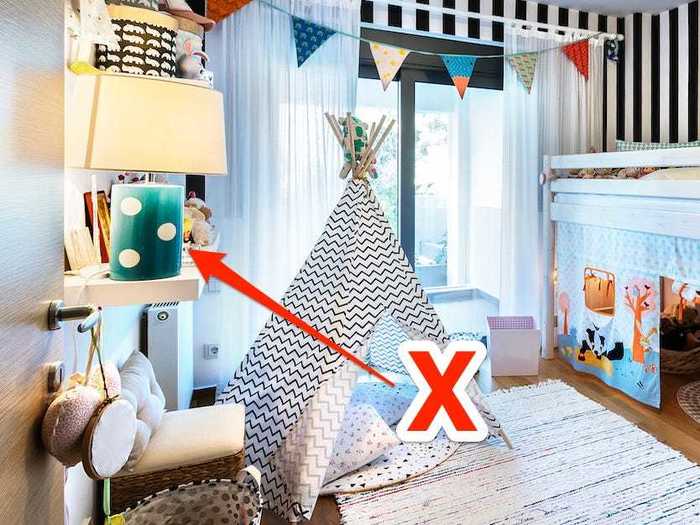
Playforth mentioned that large lamps can easily be pulled off of a dresser or table.
"This could apply to multiple different rooms, but big lamps, those are harder to secure," Playforth said. "You want to make sure that your child doesn't pull the lamp onto themselves." If it's heavy enough, the lamp could cause serious injuries to your child.
If you can't avoid a lamp, make sure its cord is secure and consider using something like a cord cover or cord concealer.
Parents should research a kind of plant before bringing it into their home or playroom.
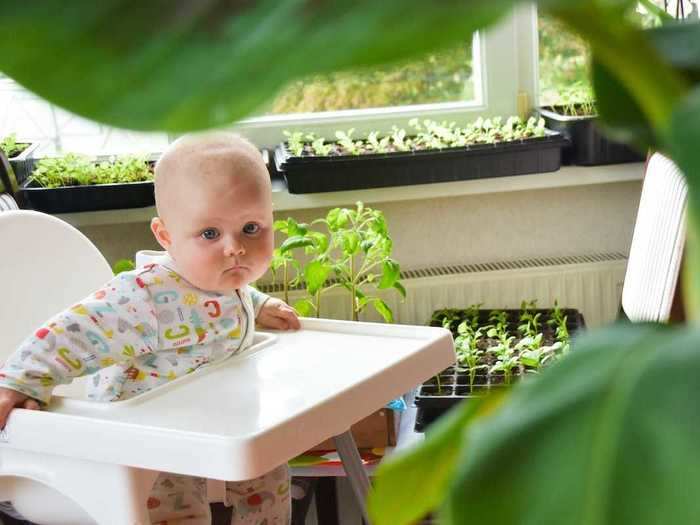
Just as some houseplants can be toxic for pets, certain kinds can also be toxic to babies and children.
Double-check each plant you bring into your home is safe, especially if it's going to be in your child's reach. Otherwise, opt for another plant.
"Nobody really thinks about poisonous houseplants," Playforth said. "If you're going to have plants in the house [...] make sure you don't have anything poisonous in the house."
This is a great example of why it's important to have poison control's phone number handy, Playforth said. Either memorize it, save it in your phone, or post it to a communal bulletin board.
Finally, windows should be latched with baby guards.
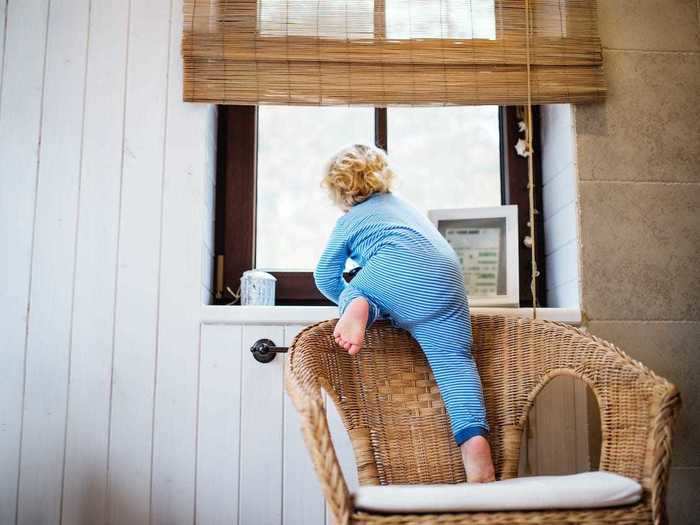
"An unsupervised child can cause all sorts of trouble," Playforth said. One concern is that a child could access a window and potentially fall out, she said.
Most of the pediatricians Insider spoke with urge families to make sure windows are latched properly and recommend adding window guards to your apartment or house, especially on floors above the first.
In the US alone, an estimated 15,000 children injure themselves from window falls each year, according to Cincinnati's Children's, a nonprofit academic medical center.
Martin stressed that window screens are not enough.
"We want to make sure that the windows are secure and that they have latches on them," she said. "A screen is not going to protect the kiddo, so we don't want to leave a baby in the room with an open window."
Playforth added that manufacturers have designed window guards with a quick release, which allow families to escape in an emergency, like a house fire.
READ MORE ARTICLES ON
Popular Right Now
Popular Keywords
Advertisement